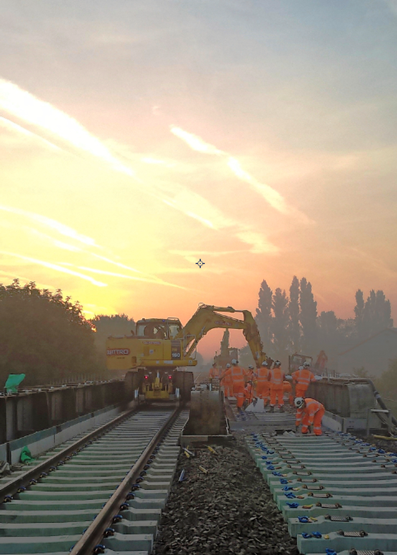 Read the peer reviews for this feature
Read the peer reviews for this feature
How Control Periods are best remembered is more often than not defined by outputs, and the delivery of flagship projects.
That has meant a strong field of contenders for CP5, including the multi billion-pound Thameslink and Crossrail programmes, and perhaps the introduction of a new generation of high-speed trains on the Great Western and East Coast Main Lines.
Where CP5 could well differ, however, is in how prominent Network Rail’s internal changes have been. Much of the backdrop for April 2014-March 2019 has been provided by the many twists and turns of NR’s devolutionary journey - it has certainly been one of the most frequently visited topics in RailReview, as a steady stream of structural reforms and behavioural shifts continue to reshape the organisation.
Decentralisation has been the order of the day for both Chairman Sir Peter Hendy and Chief Executive Mark Carne, as they continue to steer the NR ship towards achieving their stated ambition of leading a more efficient and customer-focused business.
Underpinning this process has been the transfer of significant operational and financial authority away from NR’s corporate centre to its eight increasingly autonomous geographical Route-based businesses (plus its virtual route for freight and national passenger operators).
We’ve therefore heard how, as a direct consequence, Route Managing Directors have been flexing their new decision-making powers to narrow the gap with their train operating customers, by using new alignment tools such as joint scorecards, Supervisory Boards and integrated operating teams.
At the opposite end of the scale, decentralisation has also begun to shrink the size of NR’s corporate centre, although it has not been dispossessed entirely of purpose or clout - it has retained a number of key system operator functions needed to support the Routes, such as timetabling and Infrastructure Projects (IP).
Led by Managing Director Dr Francis Paonessa, IP has remained a network-wide directorate, although it has been repositioned within NR’s hierarchy to form a matrix delivery organisation that is aligned to the Routes via its four regional teams.
IP also has additional specialist teams in track and signalling, and separate delivery teams for its two largest projects - Thameslink and the Great North Rail Project.
Within this structure, the Routes and project sponsors are IP’s internal customers and define the scope of what enhancements and renewals are needed, which are then funded from route-based settlements. IP costs the work and then takes it through NR’s eight-stage GRIP (Governance for Railway Projects) process all the way to project close-out.
“Some people have a historical view of IP that is no longer accurate, and we’ve done a lot to alter the way in which we interact with the rest of NR,” explains Paonessa.
“IP sits as its own project management and infrastructure delivery organisation, providing functional support to the Routes. We spend the Routes’ money and provide support to them as our customers. We don’t actually have control over scope, spec or access as those outputs now come from other parts of NR.
“We act as that intelligent client between what’s wanted and the supply chain delivering it. And we’ve come a long way in the business from saying ‘anything to do with budgets and delivery sits with IP’ to the Route MDs having this new set of accountabilities.”
With 4,300 employees, IP represents just 12% of NR’s total workforce but over two-thirds of its spending power, utilising a supply chain of more than 3,000 individual companies to deliver more than £25 billion worth of enhancements and renewals in CP5.
It has more than 15,000 live projects on its books at any one time, and in 2016 delivered almost £6bn worth of work - representing 22% of all UK infrastructure. Its annual activity equates to £120 million worth of construction each week - the equivalent of building an Olympic Stadium every month but in the challenging environment of an operational railway.
Recasting IP’s role into a support function for the Routes has undoubtedly made it a less top-down delivery organisation, but why keep an organisation of that size at all within NR’s devolutionary model?
This question was one of many scrutinised by the Shaw Report, when it was published in March 2016 to consider the future shape and financing of NR.
The report’s key recommendation was that NR should accelerate its drive for devolution, although it stopped short of calling for IP’s break up to Route level. While recognising the bureaucracy and lack of agility inherent in organisations as large as IP, it could not be ignored that there remains significant bulk purchasing power by retaining a nationwide portfolio of projects.
Shaw also agreed that IP is much better placed than the Routes to direct limited resources and expertise from the supply chain to where they are needed most, rather than operating on a first-come-first-served basis.
Fluctuations in demand and workload could also naturally be expected to be amplified at Route level, raising questions over the efficiency of confining potentially under-utilised resources away from parts of the country where they could be deployed to greater effect.
“I think we have the best of both worlds at the moment,” adds Paonessa.
“We have the Routes, which are more outward-facing and better placed to understand the needs of train operators and passengers. And then you have the size, scope and capability of an IP organisation to deliver that work effectively.
“Also, if you broke the teams up into eight geographic areas, it’s very hard to manage the peaks and troughs. We smooth those out on a national level and can talk to the supply chain on behalf of NR as a whole, instead of eight teams trying to engage with the same suppliers. It’s far easier to do on an aggregated level when you have a consolidated and co-ordinated business.”
There is acknowledgement from IP’s executive team that the relationship between IP and its internal customer base is still being refined, as NR’s devolved structure continues to gain maturity.
But while there is clearly room for improvement in the level of integration it has with the Routes, IP’s Finance Director Anit Chandarana echoes much of Paonessa’s feelings for the merits in keeping a network-wide perspective over project delivery.
“As part of our transformation journey we’re beginning to ask those questions , and we’re involving Route MDs and the supply chain in that because we still have a journey to go on to understand their needs much better.
“But for me, there’s a strong argument around the skills set you need to deliver major projects, and the fact that there isn’t geographic consistency in the size of that work bank. You could easily end up with a build-up of resources under a Route and then later find that there is a requirement for it somewhere else.
“Having a national organisation called IP allows us to manage that variability better, but it also enables us to take a view around professional development of our people in a way that’s consistent. We recognise that we need to be better at that, and having a national construct allows us to do that more effectively.”
The repositioning of IP within NR has also been accompanied by concerted efforts to get much better at what it does, following a bad start to CP5 dominated by the ugly fallout generated by well-publicised possession overruns at King’s Cross and Paddington during Christmas 2014.
This was followed less than a year later by the Hendy Report, which re-baselined IP’s portfolio to help rectify the over-optimistic timescales and inaccurate cost estimates applied to several major projects, including the much-maligned Great Western Route Modernisation.
Hendy therefore tasked IP to better understand the cost and delivery challenges associated with projects going forward, which has led to some notable improvements in its schedule and budgetary adherence.
In 2014, IP was hitting just 62% of its entry-into-service milestones (GRIP stage 6). In 2016, that figure had climbed to 93%, giving greater certainty of delivery. Meanwhile, Chandarana reports that IP is currently delivering projects that are no longer in development to within 2.7% of budget, owing to the advances made in how IP completes its estimation and costing of projects.
This includes mitigating high levels of optimism bias, which research published by University College London in January concluded could be as much as 66% at GRIP stage 1, and which needed to be properly reflected in costings.
IP also launched an Enhancements Improvement Programme in October 2015, with seven workstreams including the creation of a new portfolio reporting system, and the insertion of final decision points at key stages of the project lifecycle to prevent commitments being made until project development is complete.
“There have been many improvements since 2015 in how we cost and plan projects,” adds Chandarana.
“We’ve now agreed with the DfT to allow for optimism bias which will resolve issues for future programmes, but it still means we have some legacy schemes that it hasn’t been applied to, such as Great Western.
“This is about de-risking rail by developing projects properly and being disciplined about when we declare price and scheme duration, because it is tempting to commit too early on those things. We also have to hold ourselves open to challenge internally, so that we can be really confident that the price we give the customer can be one we deliver at.”
Passengers and train operators will also be much happier that possession overrun delay minutes have been halved since 2014, and now contribute just 0.3% of total network delay minutes. Meanwhile, possessions lasting more than 12 hours are down 40% on CP4, and two-thirds of the 40,000 possessions IP requires each year now last less than eight hours.
Looking to the future, IP’s next challenge will be an external one - it is increasingly being opened up to contestability from the supply chain to enable its efficiency and competitiveness to be properly benchmarked.
The Hansford Review published on July 31 recommended a series of reforms within NR to enable third parties to not only fund enhancements, but also have choice over who delivers them. NR responded with commitments that will help remove those barriers, such as publishing a list of third party opportunities, introducing flexibility into railway standards, and launching a rewards scheme to share any savings achieved from innovative ideas between NR and the company or individual.
Paonessa says he welcomes these recommendations and the increased contestability it will bring IP - it will either confirm that IP is delivering projects in an optimal way, or bring better practices to the fore that will help it improve.
He explains: “It’s easy to see the things we don’t do well, but it’s very difficult to see the things that we do well, because there’s no one to compare to. I’d really like to see other people delivering the same kinds of projects as us in the same challenging environment, and we’ll either find we’re doing a good job, or other people will set the bar even higher. I think we’ve moved forward a lot in the last three years, and I can see lots of opportunities from this.”
However, Paonessa also warns that projects such as the Great Western Route Modernisation demonstrate the difficulties that a commercial organisation could face by working on the operational railway, where overruns come with financial penalties.
Suitable mechanisms have yet to be created to balance that risk, but it is one of the focuses of a report commissioned by Secretary of State for Transport Chris Grayling into the potential private delivery and operation of the East West Rail link between Oxford and Cambridge.
It is being written by NR non-executive director and East West Rail Chairman Rob Brighouse, and is expected to pave the way for the line to be delivered independently of NR. But until the report’s recommendations are known, it leaves IP almost certainly better placed (for now) to manage risk by integrating enhancements with other workstreams.
“Access can massively drive your costs, which can be quite a difficult thing for commercial organisations to deal with. It’s the same reason that Crossrail Ltd is delivering work within the portals, and we’re delivering the £2.3bn worth of working which is on network,” says Paonessa.
“There are some complex interfaces with the operational railway, and what we need to see from Rob’s report is how best to manage those. But cost-effectiveness is at the heart of all this, and we really want to be able to compare and contrast by opening up our schemes. It’s up to us to convince people that investing in the railways is a good thing, and that to have that investment delivered by IP is a good thing.”

Paul has succinctly laid out Network Rail’s views on how to develop investment projects within Network Rail, and touched on the three key issues of economies of scale, contestability and prioritisation in the allocation of scarce resources.
Network Rail’s argument is that the difficulties inherent in these three key areas mean that only a single, nationally led management structure is capable of satisfactorily managing them. It is perhaps this line of thinking within the single National Grid structure which has led to multi-year lead times for new grid feeds onto the railway?
Stand one step back, and it seems that an argument is being advanced for a Stalinist-style centrally planned investment delivery economy. Is this what our railway really needs as we seek to encourage innovation and new sources of funding?
We should perhaps start our analysis by asking the customer what he or she thinks. If you do this a different picture emerges from the officially sanctioned one - most external parties find Network Rail extraordinarily difficult to deal with when they are seeking to develop infrastructure interventions. Part of this is down to a historical weakness within the Route structures, which Mark Carne’s reforms are now seeking to address; but partly it is poor-quality relationships between the Routes and their IP supply organisations.
Whisper it quietly, but IP has a reputation out there for being three things above all else: arrogant, late and very expensive. Network Rail will say that this is based on an out-of-date perception of its capabilities, but my contacts tell me otherwise.
In fact, there is intense frustration evident between Route teams (who carry the can with their customers and stakeholders when things run over time or budget) and their IP partners. This frustration frequently spills over into the Routes’ customers - the train operators and freight operators who have to deal with the consequences of IP problems and frequently bend over backwards to accommodate late changes to possession plans.
Now, I wouldn’t be naive enough to believe that if you devolved IP into the Route teams all these problems would disappear - of course they wouldn’t! But when I was a Regional Director for Railtrack and then Network Rail I had my own project development and delivery teams, so I had no one else to blame if things didn’t go well. It was my role to ensure that the organisation worked effectively together… my responsibility to make difficult decisions when trade-offs were required (as they always will be)… me who had the overall P&L responsibility for continuing operations and the investment programme… and me who had to front up to customers, the media and stakeholders. This single point of accountability at a level in the organisation where you are senior enough to have enough experience and understanding, yet not having such a wide-ranging portfolio that you are effectively some distance from the issues in play.
To make this work effectively you do need to have top-notch railway people in your Route Managing Director roles, otherwise the entire Route organisation will only ever be as good as its leader. I know that Mark Carne is on a journey to get to this point where all the Routes are headed by very high-calibre business leaders, but I hope that these will also be seasoned railway professionals, so that they can hit the ground running and understand the issues and dynamics they are faced with.
So my prescription for Network Rail’s next steps in investment projects would look like this:
n Ensure that sponsorship is treated with the importance it deserves, not a home for burnt-out people who have been over-promoted (I’m sure it isn’t) or junior managers posted to these roles to learn the business. Instead, jobs for railway experts with business brains and a can-do attitude. Make sure the job evaluation system recognises this, so that people of the right level of expertise and motivation are posted to become sponsors, and then train them in all the appropriate planning and evaluation techniques.
n Move from four regional IP delivery units to one per Route, and change the reporting line so that the solid line is to the RMD and a dotted line to the IP Director.
n Traditional track renewal is a production line activity and needs to be closely co-ordinated with heavy maintenance. So it should be managed and contracted out where appropriate within these units. All of them as configured today are big enough to have adequate scale to make this work properly.
n Retain national units (at least for the time being) for lumpy items such as S&C renewals and major signalling works, where resources are very scarce and expensive and whose utilisation must be carefully co-ordinated. But ensure that Routes are in the driving seat, as customers, and the centre is not granted monopoly supply status. In time this work should be migrated to become contestable within a market environment.
I have been very impressed with the calibre of managers Network Rail is developing through its graduate management training schemes - there are some extraordinarily keen and bright people coming through the ranks. We must ensure that the organisation as a whole adapts to prevent them becoming frustrated by inefficiency and poor decision-making, so that they don’t become disillusioned and eventually leave.

It’s now over five years since the first tentative steps towards devolving responsibility to routes. This article assesses what is probably the biggest non-devolved part of NR’s structure, and in considering my response, a couple of statistics stood out.
IP is stated to have 15,000 live projects on the go, with a supply chain of 3,000 companies, and takes 8,000 possessions a year to deliver its workload. These stats alone highlight the challenge of any attempt to split the organisation into geographic parts, and to maintain the economies of scale and consistency of approach currently in place when managed as one team supporting the routes. It’s easy to think of IP as only being involved in the big headline schemes - Crossrail, Thameslink, GWML - but as the 15,000 live projects shows, its reach extends much more widely and much deeper than many people think.
The article highlights the good progress that has been made to improve delivery in recent years. What stands out for me is the absolute importance of getting the relationship with the Routes right, which for me is even more important than any organisational structure changes.
The relationship needs to work well on many different levels. First and foremost, the Route has to feel like it is the customer and that IP behaves as any supplier would - responsive and focused on the customer’s needs. The relationship with the sponsor has to be first class, with a clear and unambiguous focus on requirements and deliverables. There has to be an ability to work closely with local operations and maintenance teams, both in respect of project delivery and also making sure that they, as the long-term custodians of what is being built, feel they have sufficient input and dialogue regarding the asset. It also helps if there can be some direct dialogue with the relevant TOCs and FOCs, so that they feel involved - and also to discuss any opportunities to improve access for work.
In the devolved Scotland Route we generally enjoyed excellent relationships with the non-devolved IP team across a whole range of projects. This was because IP’s leadership team fully bought into ‘route as customer’, backed up by fantastic people throughout IP’s team who took the time and trouble to build strong relationships both across the route team and with customers. As a result, the vast majority of schemes - from line re-openings through to minor works - were delivered on time and to budget, and there was very much a culture of ‘mutual assistance’ when needed on both sides. There was also healthy challenge, with the newly devolved route minor works team competing with IP for smaller schemes and sharpening prices as a result - further contestability, particularly at the smaller end of the 15,000 projects, is essential in the continuing drive to reduce industry costs.
As devolution continues, with scorecards, integrated teams, Supervisory Boards and alliances (deep and light) all changing the industry relationships, the need for IP to be fully participating in all these areas is greater than ever. This can be achieved by adopting the principles of alliancing and a strong customer/supplier relationship between Routes and their local IP teams to build on past success and drive further improvements.

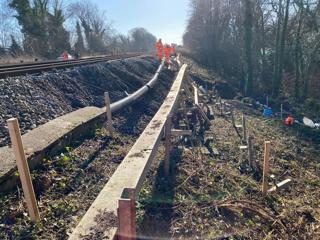
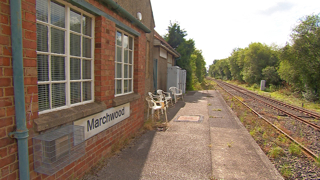
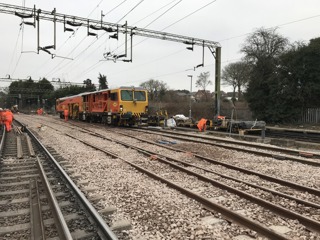
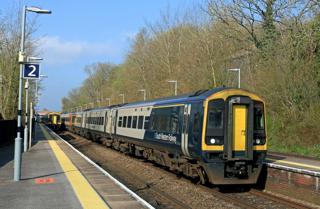
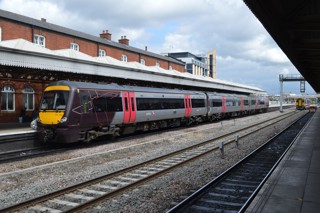

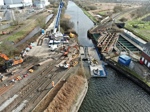









Login to comment
Comments
No comments have been made yet.